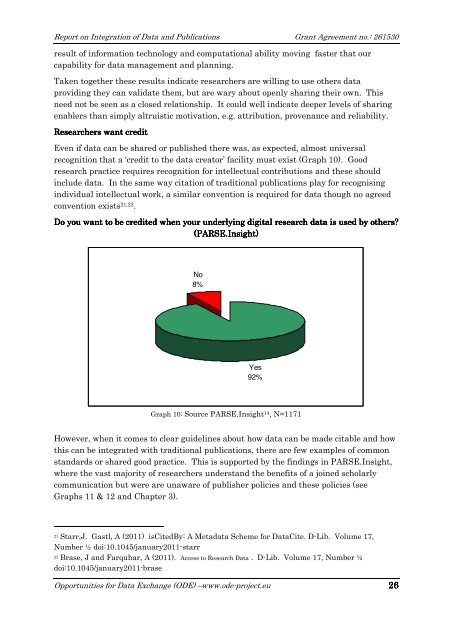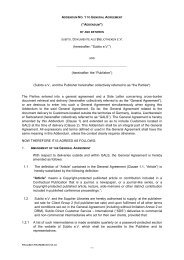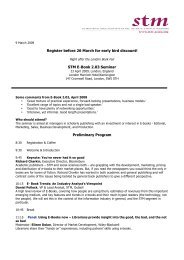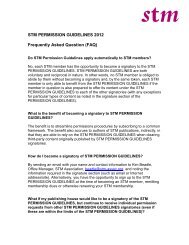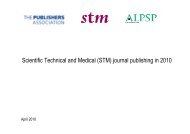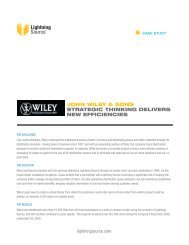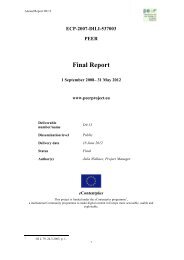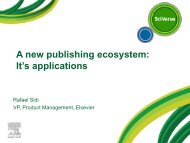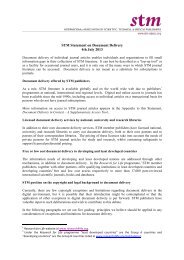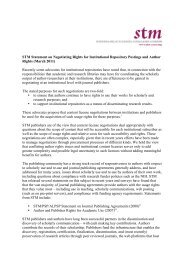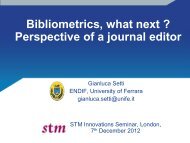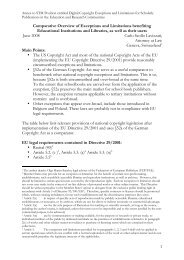Integration of Data and Publications - Alliance for Permanent Access
Integration of Data and Publications - Alliance for Permanent Access
Integration of Data and Publications - Alliance for Permanent Access
Create successful ePaper yourself
Turn your PDF publications into a flip-book with our unique Google optimized e-Paper software.
Report on <strong>Integration</strong> <strong>of</strong> <strong>Data</strong> <strong>and</strong> <strong>Publications</strong> Grant Agreement no.: 261530<br />
result <strong>of</strong> in<strong>for</strong>mation technology <strong>and</strong> computational ability moving faster that our<br />
capability <strong>for</strong> data management <strong>and</strong> planning.<br />
Taken together these results indicate researchers are willing to use others data<br />
providing they can validate them, but are wary about openly sharing their own. This<br />
need not be seen as a closed relationship. It could well indicate deeper levels <strong>of</strong> sharing<br />
enablers than simply altruistic motivation, e.g. attribution, provenance <strong>and</strong> reliability.<br />
Researchers want credit<br />
Even if data can be shared or published there was, as expected, almost universal<br />
recognition that a ‘credit to the data creator’ facility must exist (Graph 10). Good<br />
research practice requires recognition <strong>for</strong> intellectual contributions <strong>and</strong> these should<br />
include data. In the same way citation <strong>of</strong> traditional publications play <strong>for</strong> recognising<br />
individual intellectual work, a similar convention is required <strong>for</strong> data though no agreed<br />
convention exists 21,22 .<br />
Do you want to be credited when your underlying digital research data is used by others?<br />
(PARSE.Insight)<br />
No<br />
8%<br />
Yes<br />
92%<br />
Graph 10: Source PARSE.Insight 14 , N=1171<br />
However, when it comes to clear guidelines about how data can be made citable <strong>and</strong> how<br />
this can be integrated with traditional publications, there are few examples <strong>of</strong> common<br />
st<strong>and</strong>ards or shared good practice. This is supported by the findings in PARSE.Insight,<br />
where the vast majority <strong>of</strong> researchers underst<strong>and</strong> the benefits <strong>of</strong> a joined scholarly<br />
communication but were are unaware <strong>of</strong> publisher policies <strong>and</strong> these policies (see<br />
Graphs 11 & 12 <strong>and</strong> Chapter 3).<br />
21<br />
Starr,J. Gastl, A (2011) isCitedBy: A Metadata Scheme <strong>for</strong> <strong>Data</strong>Cite. D-Lib. Volume 17,<br />
Number ½ doi:10.1045/january2011-starr<br />
22<br />
Brase, J <strong>and</strong> Farquhar, A (2011). <strong>Access</strong> to Research <strong>Data</strong> . D-Lib. Volume 17, Number ½<br />
doi:10.1045/january2011-brase<br />
Opportunities <strong>for</strong> <strong>Data</strong> Exchange (ODE) –www.ode-project.eu 26


